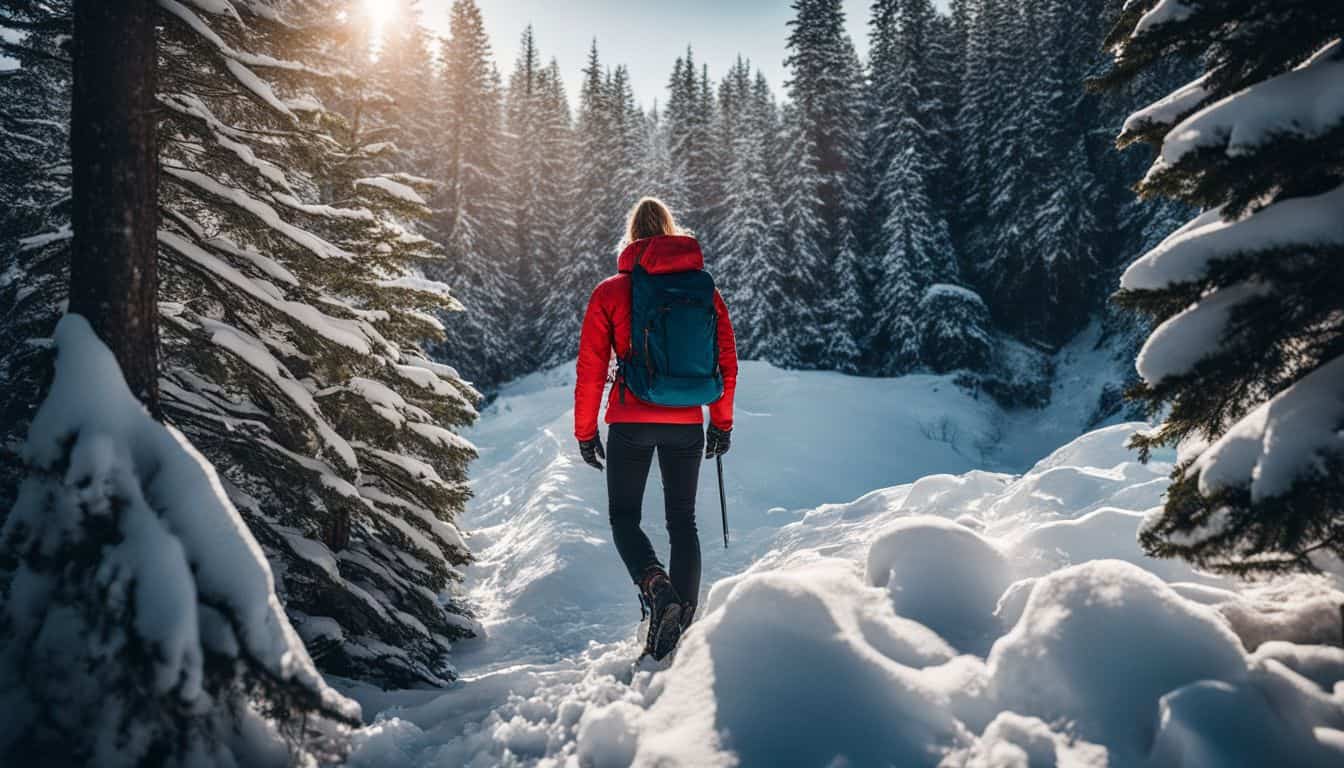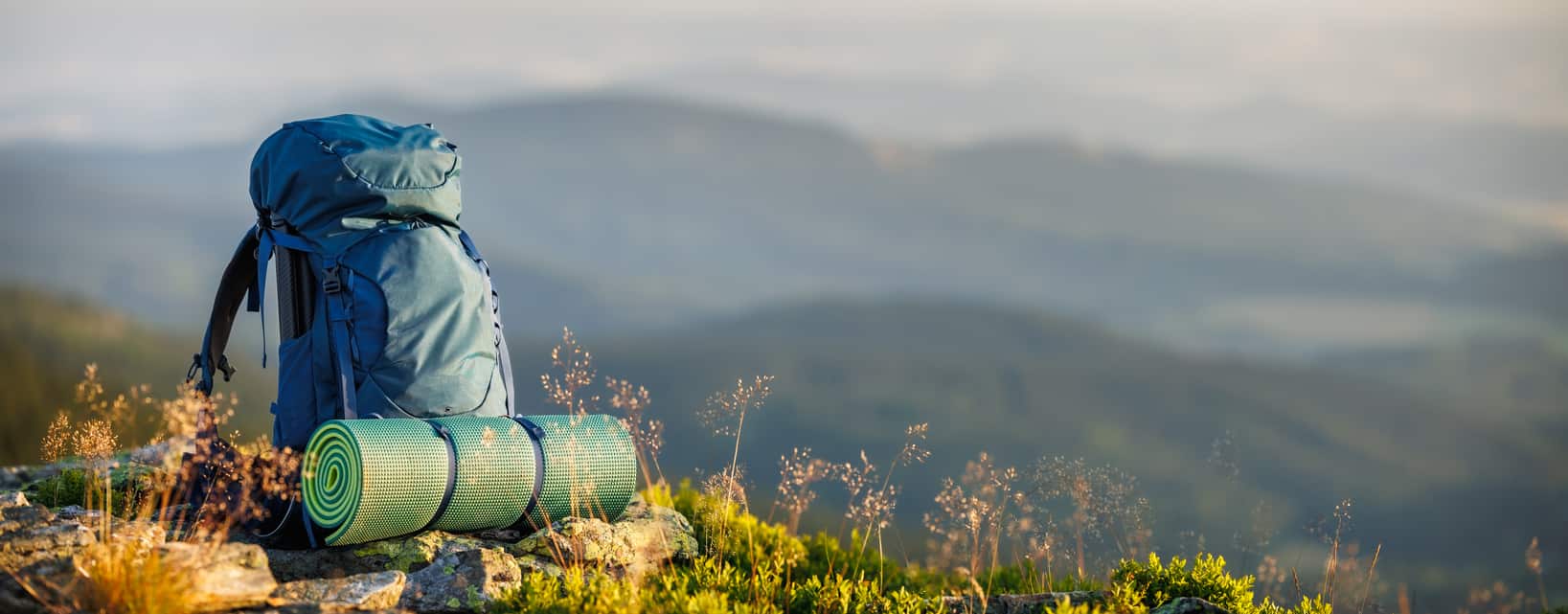Seasonal backpacking involves adapting your trips to the changing conditions throughout the year. Late-season trips, like hiking the Enchantments in October, offer fewer crowds, stunning fall foliage, and a serene wilderness experience.
As the leaves turn and temperatures drop, many hikers pack away their gear. But for the adventurous, late-season backpacking offers unique rewards. This guide will help you prepare for unforgettable autumn adventures, whether you’re new to modern backpacking or a seasoned pro.
Planning Your Late-Season Backpacking Trip
Choosing a Destination
Consider factors like accessibility, weather patterns, and your skill level. The Enchantments in Washington State is a prime example of a breathtaking late-season destination. When selecting a location, research trail conditions, potential closures, and expected weather.
For the Enchantments, be prepared for snow and ice, even in early fall. Consider the length of daylight hours, which decrease rapidly in autumn, and plan your daily mileage accordingly. Also, factor in the difficulty of the terrain and how it might be affected by seasonal changes.

Permits and Regulations
Always check permit requirements. For instance, the Enchantments has a strict permit system to protect its fragile ecosystem. Research permit processes well in advance, as popular areas like the Enchantments often require entering a lottery months before your trip.
Understand any specific regulations for the area, such as campfire restrictions, food storage requirements, and group size limits. These rules are often more stringent in sensitive alpine environments and may change seasonally.
Weather Considerations
Checking Forecasts
Use reliable sources like NOAA.gov and understand mountain weather patterns. Remember, conditions can change rapidly in alpine environments. For late-season trips, pay special attention to extended forecasts and historical weather data. Learn to read weather maps and understand how local topography affects weather patterns. Consider calling local ranger stations for the most up-to-date information on conditions.
Preparing for Variability
Be ready for significant temperature fluctuations and the possibility of snow or ice, especially at higher elevations. Late-season weather can be unpredictable, with warm days quickly turning into freezing nights. Plan for worst-case scenarios, including sudden storms or early snowfall. Understanding how to recognize signs of changing weather can be crucial for safety in remote areas.
Essential Gear for Late-Season Backpacking
Clothing
Invest in a quality layering system, including insulation and rain gear. For backpacking tips for beginners, layering is crucial for comfort in variable conditions. Start with a moisture-wicking base layer, add insulating mid-layers, and top with a waterproof and breathable outer shell. Don’t forget warm gloves, a hat, and extra socks. Quick-drying materials are essential for late-season comfort.
Sleeping System
Choose a cold-weather sleeping bag or quilt and an insulated sleeping pad to stay warm during chilly nights. Look for sleeping bags rated at least 10-15 degrees Fahrenheit below the lowest expected temperature. Consider adding a sleeping bag liner for extra warmth. An insulated sleeping pad with a high R-value is crucial for insulation from the cold ground.
Shelter
Consider a four-season tent or weather-resistant options to withstand potential harsh conditions. Ensure your shelter can handle strong winds and snow loads if there’s a chance of early winter weather. A vestibule for gear storage can be particularly useful in inclement weather. Don’t forget to bring extra stakes and guylines for added stability.
Other Essential Equipment
Don’t forget traction devices like microspikes, trekking poles for stability, and a reliable headlamp with extra batteries. Microspikes can be crucial on icy trails, while trekking poles provide balance and reduce strain on your joints. A powerful headlamp is essential for navigating in the longer nights of autumn. Consider bringing a backup light source as well.
Food and Water
Nutrition for Cold Weather
Pack high-calorie, warming foods and hot drinks to maintain energy and body heat. In cold weather, your body burns more calories to stay warm. Opt for nutrient-dense, high-fat foods like nuts, cheese, and dried meats. Bring instant soups or dehydrated meals that can be quickly prepared with hot water. Don’t forget to pack energy bars or trail mix for quick snacks during hikes. Hot drinks like tea, coffee, or hot chocolate not only warm you up but also provide a morale boost during chilly evenings.
Water Treatment
Prepare for freezing temperatures with insulated water containers and appropriate water treatment methods. Insulated water bottles or hydration bladders can prevent your water from freezing. Consider using wide-mouth bottles that are less likely to freeze at the opening.
For water treatment, chemical purification methods work better in cold temperatures than some filters, which can freeze and crack. If using a filter, keep it close to your body to prevent freezing.
Safety Considerations
Navigation
Hone your map and compass skills, and carry a GPS device with backup batteries. This is especially important when backpacking remote trails. Late-season conditions can obscure trail markers with snow or fallen leaves, making navigation more challenging. Practice using your map and compass before your trip, and don’t rely solely on electronic devices. If using a GPS, bring extra batteries and keep the device warm to extend battery life.
Emergency Preparedness
Always carry a first aid kit, emergency shelter, and a communication device like a satellite messenger. Your first aid kit should include items specific to cold weather injuries, such as hand warmers and blister treatment.
An emergency shelter like a bivy sack or space blanket can be lifesaving if you’re forced to spend an unexpected night out. A satellite messenger allows you to call for help in areas without cell service, providing peace of mind in remote locations.
Leave No Trace Principles
Practice Leave No Trace principles rigorously, especially in fragile alpine environments. Late-season impacts can last well into the next year. Be particularly mindful of camping on durable surfaces, as wet or frozen ground is more susceptible to damage.
Pack out all trash, including biodegradable items which decompose slowly in cold conditions. Respect wildlife preparing for winter and maintain a safe distance. Minimize campfire impacts by using a stove for cooking and warmth.
Training and Preparation
Physically condition yourself for challenging terrain and mentally prepare for potential harsh conditions. The better prepared you are, the more you’ll enjoy your trip. Incorporate hill training and loaded pack hikes into your fitness routine. Practice setting up your gear in various weather conditions.
Mentally prepare for the solitude and potential challenges of late-season backpacking by visualizing scenarios and planning your responses. Remember, a positive attitude can be your best tool in adverse conditions.
Conclusion
Late-season backpacking offers unique experiences and challenges. By planning responsibly and preparing thoroughly, you can safely enjoy the stunning beauty of autumn in the wilderness. Whether you’re tackling the Enchantments or exploring your local trails, embrace the solitude and splendor of the changing seasons.
Remember, the key to a successful late-season trip is preparation, flexibility, and respect for the environment. Happy trails!

Leave a Reply